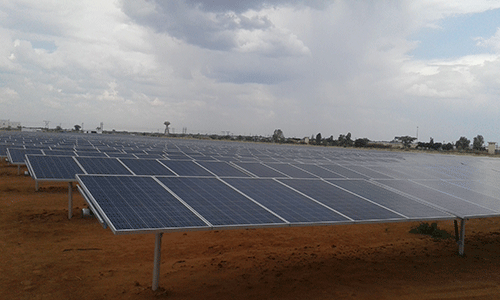Namibia still imports some 60% of its electricity needs from neighbouring countries. Despite this heavy reliance on external sources for its electricity needs, the energy ministry has set a target to reduce the import gap from the current 60% to only 20% by 2028.
As such, Namibia’s electricity consumption, or units sold to Namibian customers in 2021, was 3,386 GWH. That is 3,386,000 kWh (units), and in perspective a typical Namibian household uses approximately 5 to 10 units per day.
In terms of total energy consumption (Electricity, Petrol, Diesel, Biomass, Coal etc), Namibia consumes between 20,000 to 25,000 GWH per annum. Electricity contributes roughly only 18% to 20% of the total energy consumed. Petroleum products (Diesel and Petrol) contribute the lion’s share of approximately 55% to 60%.
According to energy ministry officials, the local power- generation figure is dependent on the output of the Ruacana Hydropower Station, the single-largest generator in the country with the potential to generate up to 80% of the local supply.
In the 2021 financial year, due to relatively low rainfall in southern Angola, the Ruacana Power Station was not able to operate at optimal capacity and generated a mere 968 GWh of energy, compared to 1,505 GWh during the previous year. The decrease in Ruacana’s output resulted in a significant reduction of locally- generated electricity, which was made up from increased imports.
As a result, imports in 2021 accounted for 67%, with local generators only producing 33%. However, the average over the past few years has been 60% import and 40% local.
Namibia also has a 100MW (FIRM) deal signed earlier this year with the South African power utility, Eskom. Under this contract, if Eskom load sheds in South Africa, then they curtail Namibia’s supply, according to the stage of load shedding in SA.
For instance, when it’s stage one or two load shedding, they reduce Namibia’s supply by 10% (10MW). Load shedding of stage three in South Africa results in a reduction of 15% (15MW).
“There is a 5% reduction in supply with every subsequent stage. For example, stage four results in 20%, stage five results in 25%, stage six results in 30%, stage seven results in 35% and the final stage, stage eight, results in a 40% or 40MW reduction from the 100MW contract we signed,” a ministry official explained.
Namibia also imports electricity from Zambia. This amounts to 180MW, split between a 100MW signed in 2017, valid until 2027, and an 80MW signed this year, and valid for five years.
Also, Namibia received 80MW from Zimbabwe through an import contract, which expires in 2024.
“Namibia is part of the Southern African Power Pool and a member of SADC. As a ministry, we want to balance the need to be self-sufficient versus affordability. If there is cheaper electricity available within the region, we want to be able to take advantage of that and import from that source. As such, the target for now is to reach at least 80% self-sufficiency by 2028.
Meanwhile, Namibia is endowed with world-class wind and solar resources to generate and export electricity. For this reason, the ministry anticipates that these two resources will in future make up the bulk of domestic electricity supply.
In addition, Green Hydrogen is an exciting prospect for the country, and while the process is still at an infant stage, it will no doubt have a huge impact on available domestic power in the future.
However, ministry officials indicated that studies are still ongoing to ascertain what this impact will be, with the results to be made available in due time once the studies are complete.
“Our estimates are that approximately 50% of the households in Namibia have access to electricity. The last official census in 2011 had this figure at 42%,” stated a ministry official.
Furthermore, the rural electrification programme has over the years managed to electrify 30 to 50 schools per annum, with the ministry targeting to electrify all the unelectrified schools within the Harambee Prosperity Plan II period.


